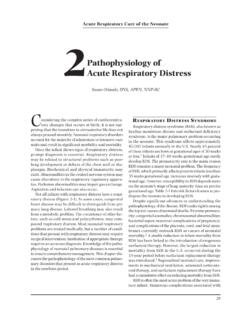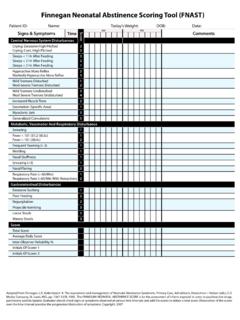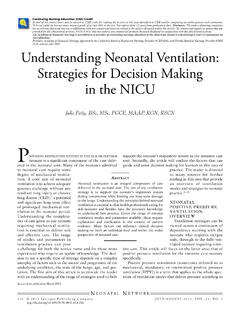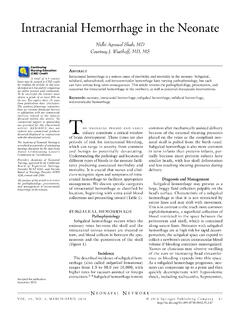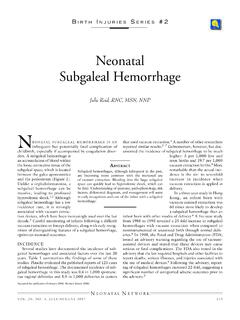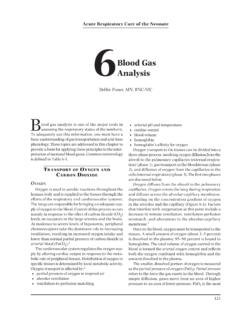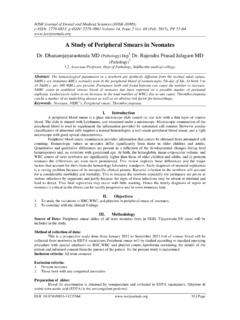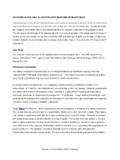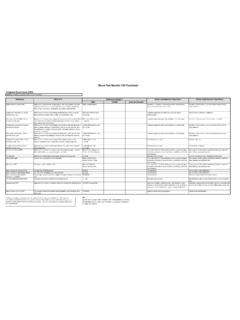Transcription of .Lab Values. T - academyofneonatalnursing.org
1 VOL. 28, NO. 2, MARCH/APRIL 2009 109 NEONATAL NETWORKTHe COMPLeTe BLOOD COUNT (CBC) is one of the more common laboratory tests ordered during the neonatal period. The CBC may be obtained to evaluate for anemia, infection, and The test offers a wealth of clinical information about the hematopoietic system, including erythrocyte, leuko-cyte, and thrombocyte values. establishing normal neonatal ranges has been difficult because blood has not been drawn on healthy neonates of similar Reference ranges that consist of the 5th to 95th percentile compiled from various studies have been used to approximate normal neonatal A variety of factors such as sample site, timing of the sample, gestational age, and the neonate s degree of health can affect the Therefore.
2 The astute practitioner must be able to recognize the clues and nuances of the CBC to guide the diagnostic HemATopo IeSISB lood cell development begins in the earliest weeks of gestation. Cell differentiation appears to begin from a popu-lation of progenitor or stem cells located within the yolk sac, liver, and bone marrow of the developing The microchemical environment of the developing stem cells determines the differentiation of at least two cell lines: the myloid hematopoietic system and the lymphoid hematopoi-etic The myloid hematopoietic cell line leads to the prolif-eration and differentiation of stem cells into the erythroid, myeloid, and megakaryocyte The erythrocytes, leukocytes, and thrombocytes develop from these The lymphoid hematopoietic cell line produces the lymphocytes.
3 Lymphocytes follow one of two independent pathways to produce the cells that will become either T lym-phocytes or B lymphocytes (Figure 1).ComponenTS of THe CBCThe CBC provides information on the following:9erythrocyte, or red blood cell (RBC), count measure of hemoglobin (Hgb) hematocrit (Hct) (percentage) mean corpuscular hemoglobin (MCH) measurement mean corpuscular hemoglobin concentration (MCHC) mean corpuscular volume (MCv) leukocyte, or white blood cell (WBC), count thrombocyte count explanation of cell morphology Several factors can affect CBC values.
4 Postnatal fluid shifts can alter the hemoglobin and hematocrit levels, and late clamping of the umbilical cord may result in an elevated hematocrit and transitory ,6,9 values can vary between sample sites. For example, capillary samples have approxi-mately an 82 percent correlation with venous samples and approxi-mately a 77 percent correlation with arterial samples, with the capillary site having a higher hemoglobin concentration and hematocrit value due to the sludging of R BCs in the low-flow capillaries and transudation of The sample site must be taken into consideration when the practitioner reviews the CBC because it can impact the intervention.
5 For example, a capillary sample may reveal an elevated hemoglobin level and hematocrit percentage, an indicator of polycythemia. In this situation, an arterial or venous sample would give a more accurate ,12 Neutrophil counts can be affected by the type of delivery the infant experienced and the timing of the sample. Neutrophil values peak at approximately six to eight hours of age in neonates born at >28 weeks ery TH ro CyTeSerythrocytes, red blood cells, first appear in the yolk sac during the mesoblastic period; this period begins at approxi-mately two weeks gestation and peaks at approximately six weeks The RBC count measures the number of circulating erythrocytes.
6 A mature RBC is a nonnucleated, biconcave disc, surrounded by a flexible membrane. Fetal (and neonatal) RBCs differ from adult RBCs in that they are larger in size, have a shorter life span, altered shape and deformability, and they contain a high fetal hemoglobin RBCs transport oxygen to the organs and tissues; it is the protein, hemoglobin, in erythrocytes that carries The hematocrit is the proportion of blood volume that consists of the RBCs. It is expressed as a percentage on the CBC. Hemoglobin in blood is measured in grams per one deciliter of whole blood and is expressed as g/dL (mmol/L) on the CBC.
7 Two conditions that can be identified by evaluating the RBC count are anemia and polycythemia. Anemia is a defi-ciency in the concentration of erythrocytes and hemoglo-bin in the blood. Neonatal anemia can be caused by acute, chronic, or iatrogenic blood loss; decreased erythrocyte production; increased destruction of erythrocytes, as with hemolysis; or shortened erythrocyte Polycythemia is most commonly defined as a venous hematocrit greater than 65 Because RBC concentration directly impacts blood viscosity, neonates with polycythemia may exhibit symptoms as a result of increased viscosity.
8 They may The Complete Blood CountTerri Lynne Milcic, RNC, NNP-BCEd i t o rPatricia Nash, MSN, MARCH/APRIL 2009, VOL. 28, NO. 2 NEONATAL NETWORKbe plethoric with occasional cyanosis or may exhibit neurologic symptoms of lethargy, irritability, and There are other indices that can provide estimates of the average size of the erythrocytes and the average concentration and quantity of hemo-globin in the erythrocytes. These indices can be measured directly or cal-culated electronically using modern hematology analyzers. They can be useful in further classifying anemia according to the hemoglobin quantity in the RBCs or the size of the RBCs or in identifying the pathologic process causing the anemia.
9 The erythrocyte indices include the MCv, the Figure 1 n Hematopoietic stem cells give rise to two major progenitor cell lineages, myeloid and lymphoid of Mikael H ggstr 1 n Erythrocyte and Platelet Reference Ranges in Term and Preterm Neonates during the First 72 Hours of LifeAgeHgb (g/dL)*Hct (%)*RBC (mm3)MCV ( mL3)MCH (%)MCHC (%)Platelets (1,000/mm3) Term31024 hours17. weeks14. 54541204031* ( 1 SD) meanAdapted from: Klaus, M. H., & Fanaroff, A. A. (Eds.). (2001). Appendix C-4. In Care of the high-risk neonate (5th ed., p. 574). Philadelphia: Saunders; Askin, D.
10 F. (2004). Appendix A-1. In Infection in the neonate: A comprehensive guide to assessment, management, and nursing care (p. 181). Santa Rosa, CA: NICU , and the MCH. The MCv measures the average size of circulating erythrocytes. It can help to quantify anemia as microcytic (small cells) or macrocytic (large cells). An elevated MCv is seen with hyperviscosity/polycythemia and also in anemia caused by folate or vitamin B12 deficiency. The MCHC measures the hemo-globin concentration in a given volume of red blood cells. The RBCs can be described as nor-mochromic, hypochromic, or hyperchromic, depending on their color, which is determined by the amount of hemoglobin present in the RBC.
